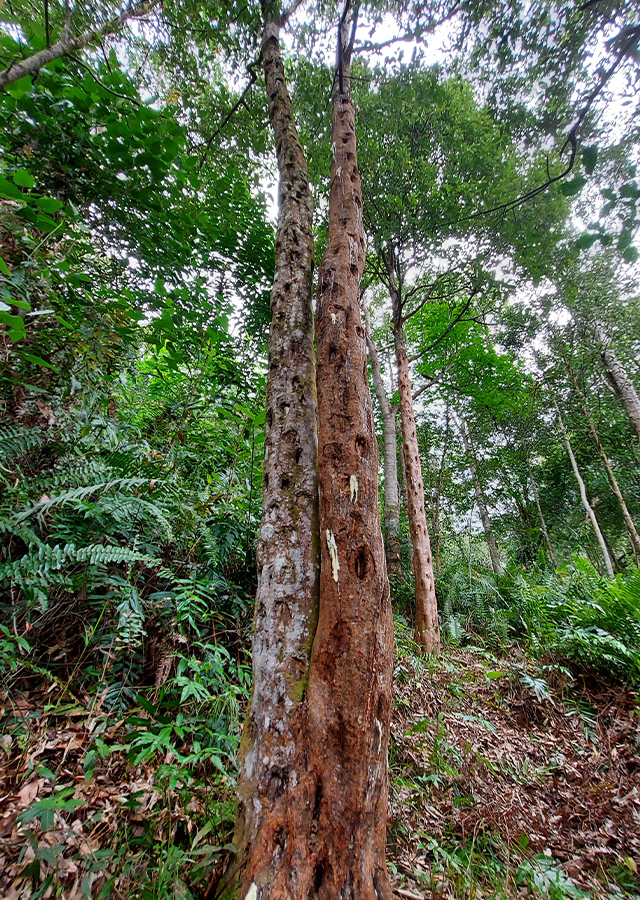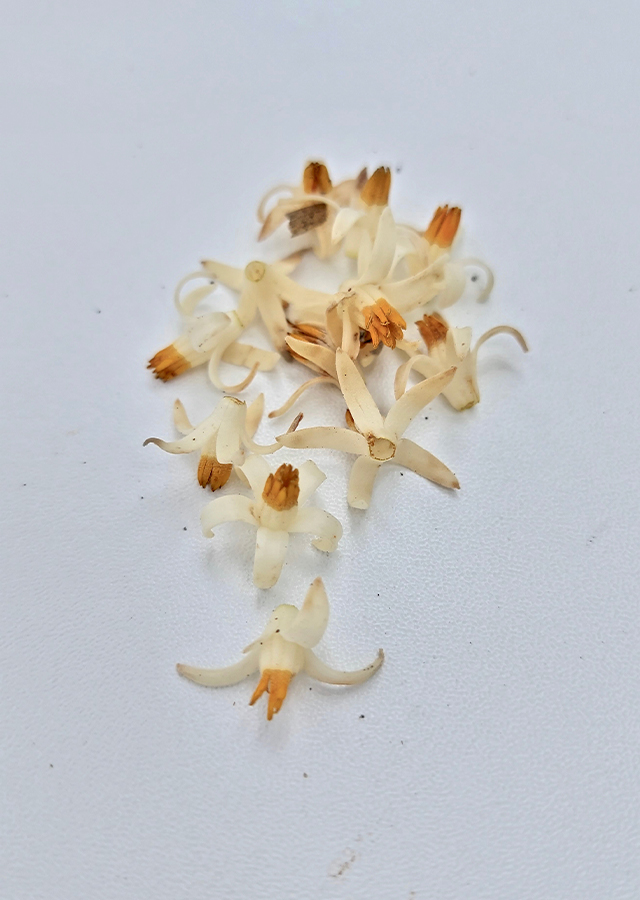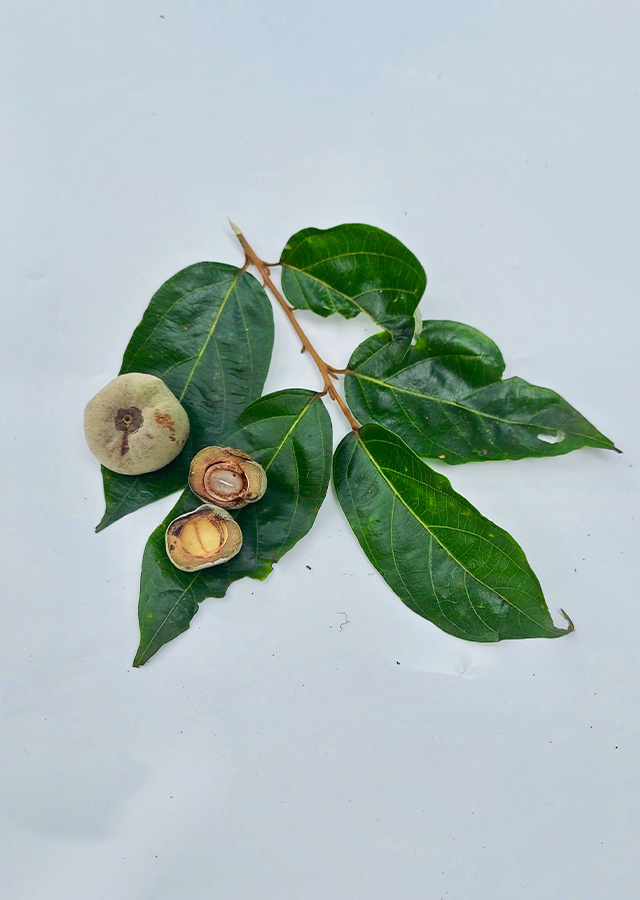Incense plant
Styrax paralleloneurus Perkins
Styracaceae
Location in our garden
Principal



Synonym
Styrax siamensis Rordorf
Styrax sumatranus J.J.Sm.
Habitus
Trees. A spiny, deciduous shrub or small tree growing about 5 m tall.
Part Used
Bark
Latex
Resin
Growing Requirements
Full Sunshine
Need Shade
High Rainfall
Habitat
Forest
Overview
The tree is native to South-West Asia, including Arabia, and most commonly East and North-East Africa near the region of the Red Sea or Arabian Gulf, specifically Ethiopia, Somalia, and Kenya. It is also one of the oldest known medicines and was widely used by the ancient Egyptians. Incense plant is particularly associated with women's health and purification rituals.
Vernacular Names
Kam yaan (Thailand), Ma yao (Chinese), Kam nha:n (Laos), Mirra (Italian), Dheddin (Somali), Arbre à myrrhe (French), Szomáliai balzsamfa (Hungarian).
Agroecology
A plant for the drier tropics and subtropics, where it can be found at elevations from 250- 1,300 m. Plants prefer a minimum temperature that does not fall below about 10 °C. It grows wild in areas where the mean annual rainfall is within the range 230-300 mm. Requires a well-drained soil and a position in full sun. Prefers shallow soils and is chiefly found over limestone.
Morphology
- Trunk - thick, light gray trunk with sharp spines protruding from its main branches.
- Leaves - are chartaceous, greyish green or glaucous, very variable with petiole 1–10 mm long.
- Leaf - up to 5 m high and 1.5 m wide. Each leaflet is about 1 cm long.
- Flower - tiny and inconspicuous, borne in more or less clustered panicles, dioecious.
- Fruit - ovate, smooth, brown, 2-4 mm long fruit, surrounded at base by a 4-toothed calyx.
- Seed - smooth with gentle swellings.
Cultivation
It is propagated by seeds or cuttings.
Chemical Constituents
Tannins, terpenoids, limonene, sesquiterpenoids, curzerene, germacrene B, isocericenine, myrcenol, beta selinene, and spathulenol.
Traditional Medicinal Uses
- It relieves spasms, digestive discomfort, and encourages healing.
- The mild astringency makes it a useful treatment for acne, boils and
- inflammatory skin problems.
- The resin has prospective value as a natural antioxidant resource.
- It has potential as a natural therapy for treating prostate cancer.
- It has antibacterial, antifungal, and anesthetic properties.
- The resin is taken internally in the treatment of dyspepsia, bronchial and ear infections, glandular fever, tonsillitis, pharyngitis, gingivitis, menstrual and circulatory problems.
- The plant is used externally to treat mouth ulcers, wounds and boils and is often added to oral preparations.
- Powdered myrrh is used in Germany to treat throat and mouth inflammation.
- It is used in the East Indies in leprosy, rheumatism and syphilis, and in Europe for plasters.
Part Used
Reference Sources
- Saputra, M.H., Sagala, S. A. H., Lee, H. S. (2019). Species Distribution of Styrax sumatrana in North Sumatra Using Maxent Modelling Approach. Forum Geografi, 33 (2) : 196-208.

